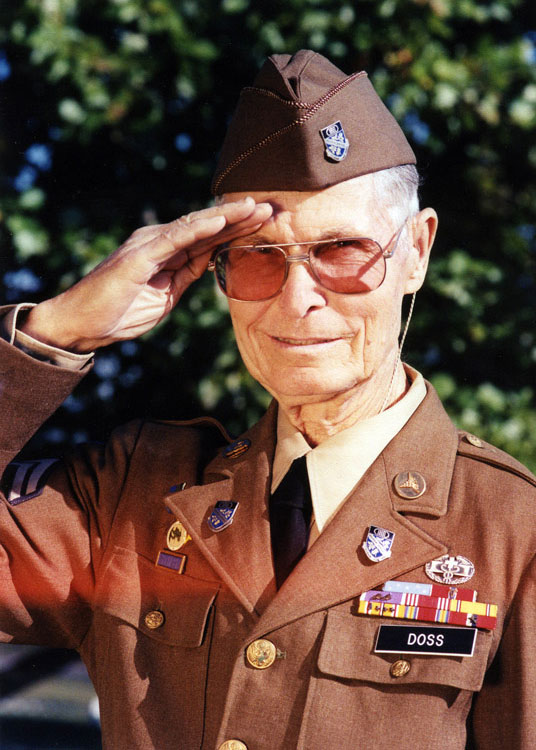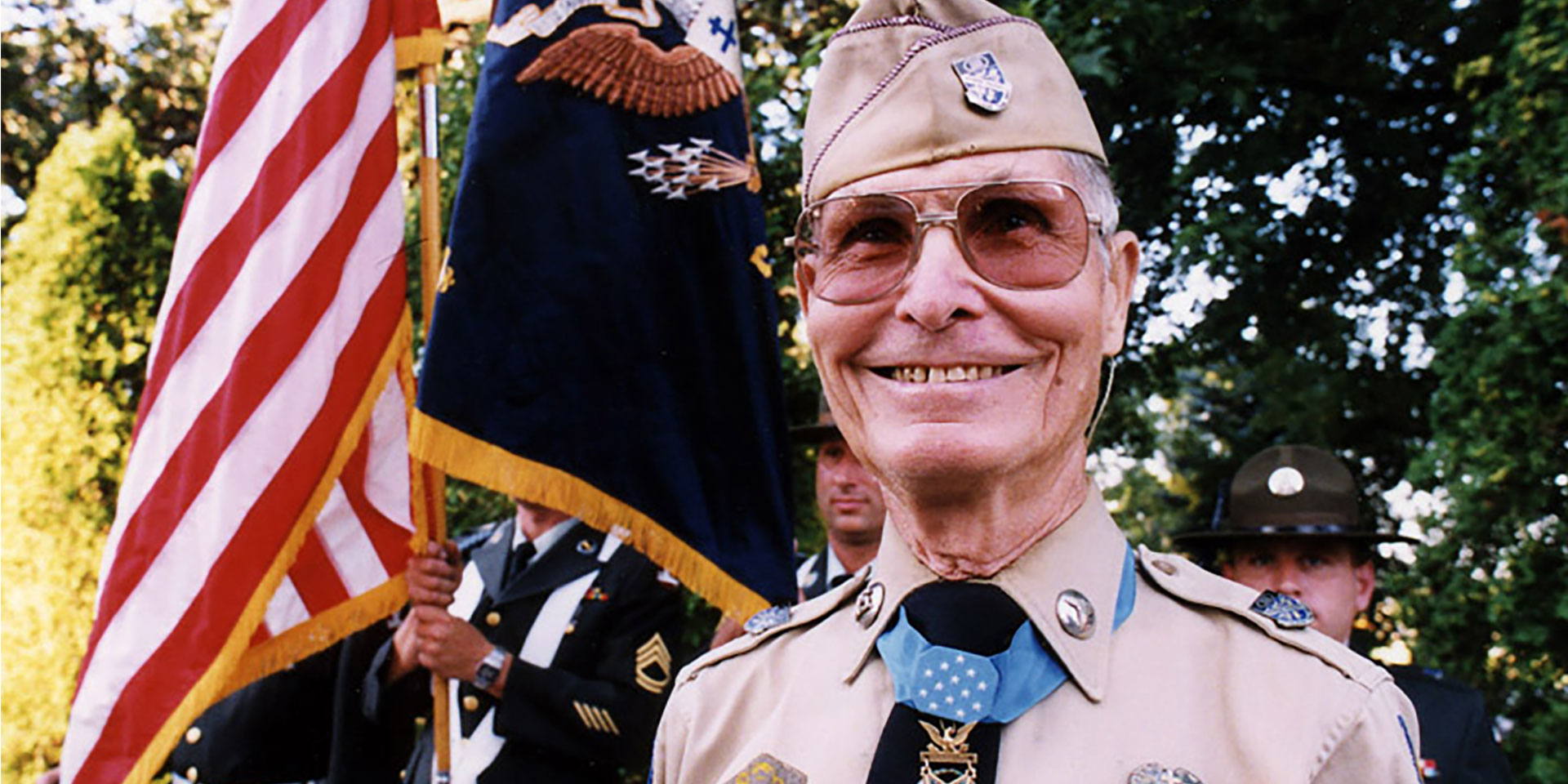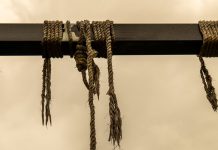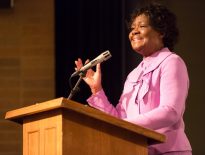In one sense, it was hardly an unusual story: a big-budget Hollywood war movie with a big-name director and famous actors, featuring long and ultra-violent action sequences, with heroes and enemies.
And—of course—critical and popular acclaim and a string of major awards, including two Oscars for its technical production.
But in another sense, it is one of the most unlikely stories: a United States army medic who—because of his faith—refused to carry a gun, even in the midst of one of the bloodiest battles of World War II, yet was the first conscientious objector to receive the Medal of Honor for his heroic actions on that battlefield.
The unlikely true story is that of Desmond Doss, a medic in the United States Army’s 77th Infantry Division deployed to the Pacific in 1945 and engaged in the fierce Battle of Okinawa against the Japanese Imperial Forces.
Doss was raised in Lynchburg, Virginia, as a Seventh-day Adventist Christian and was committed to keeping the Ten Commandments, including the commands to “Remember the Sabbath . . .” and “Thou shalt not kill” (see Exodus 20:1–17)—even amid the worst of the fighting at Okinawa’s Hacksaw Ridge. And it was on this battlefield that he rescued as many as 75 injured soldiers, lowering them safely down a cliff face while under fire himself, all the while praying to be able to rescue “one more” of his men, some of whom had previously ridiculed him for his faith.
Doss’s remarkable story was retold in 2016 in Mel Gibson’s Hacksaw Ridge, with the role of Desmond Doss played by Andrew Garfield. Filmed in Australia, it also features a number of recognisable local actors in smaller roles, including Hugo Weaving, Rachel Griffiths and Sam Worthington. Also listed among the many people in the production team is a less well-known filmmaker, Terry Benedict. He devoted some 17 years to telling this story, including making his own documentary about the Desmond Doss story—The Conscientious Objector, launched in 2004—and spending time with Doss in this process, remaining friends with him until Doss’s death at age 87 in 2006.
“I first read Desmond’s story as a kid,” Benedict explains, “and it stuck with me my whole life. When it came back around in 1999, I remembered just how much that story affected me as far as Desmond standing up for his belief system and having faith that God would carry him through whatever he faced. And when I met Desmond, I realised that really was who he was and it made me want to tell his story even more.”
At that time, Benedict and his family were living near Doss in Tennessee and this allowed him to spend time with Doss and earn his trust. “Hollywood had been chasing him to tell his story for 55 years and he kept saying no,” Benedict recalls. “So, one day we were standing in front of a grocery store in Tennessee and I told him that I really felt that his story would be valuable and inspirational to the whole world, and my commitment to him was that I would answer to God first, him second—and everyone else could get in line.

“I really meant that because we would get one chance to tell his story and it is such an inspirational story that we had to tell it in a way that was very clear, compelling—and authentically straightforward. He got a big smile and agreed on the spot then and there that we would do it.”
Benedict remembers the relationship that developed with Doss as an older man as one of the most influential in his life. It affected him personally and also became a major part of his professional life.
“When I was making the documentary, there was a moment when I was discouraged and wondering how I was going to get this to come together in a way that would meet the standard of excellence that I was expecting of myself and of our team.
“Desmond asked me what was wrong, noticing that there was something on my mind. And I shared with him what I was feeling. He just kind of smiled and said, ‘Everything’s going to work out because you’ve made a commitment to God to tell my story in a way that can inspire others.’ Then he just said a little 30-second prayer—and this was typical of Desmond—that cut to the bone and it would feel like everything was going to be OK. The burden was lifted.”
One of the unintended benefits of this long-term project for Benedict was that his young children got to know Doss, someone he considered a true role model. “When we talk about role models, we’re often disappointed when our role models fail us—but Desmond as a role model didn’t fail and I think that’s what makes his story so amazing,” Benedict explains.
“He was not a perfect human being, but he carried himself in a very honest, transparent manner. Whatever flaws were there, we can see and accept, but the overriding theme of his story was that he was able to carry the day because he had this faith in God and he wasn’t going to allow anything to interrupt that relationship.”
When invitations had come to work with Hollywood studios to retell Doss’s story, he was concerned about how he would be portrayed and whether “Hollywood” would understand the faith that was foundational to who he was and his actions on the battlefield. After Doss’s death, Benedict became one of the protectors of this legacy and this was his key contribution to the Hacksaw Ridge project.
“I had given him assurances that I would do my best to always protect the essence of his character,” says Benedict. “So, when Andrew Garfield came on board to play Desmond, he wanted to portray him as transparently and as honestly as he could. We thought it would be a good idea if he came down to Tennessee and visited the pivotal geographical places in Desmond’s life. It gave Andrew the chance to see the very humble environment that Desmond grew up in, as well as connecting with me who had got to know Desmond closely.
“We talked a lot about Desmond, the man and his faith. I think that translated incredibly well to the screen. If you watch the documentary, then Hacksaw Ridge, Andrew’s performance is pretty amazing in how seamlessly he represented Desmond. He really did a terrific job.”
This was the culmination of a long process of dedication to telling this story, first as a documentary and then in its big-budget theatrical form. After completing the documentary, there was a 10-year process of sporadic meetings with production companies and producers in Los Angeles before progress seemed to be made.
“I really needed to make sure that we were going to create a team that was committed to sticking to Desmond’s story and what it meant as a story of character, faith and commitment. When Mel Gibson finally came on board, things really started to click along and then the other actors joined the team as well.”
So, after such a long development process—spending so much time with Desmond Doss’s story and walking the red carpet at the Oscars ceremony in 2017—what does Benedict hope those who saw the film or continue to watch it today will take away from it?
“I hope they will see that there is value in having a faith-based life,” Benedict says. “And, despite having to swim upstream at times with your faith, that at the end you can always rely on your faith in God to carry the day. That’s what Desmond would want, because that’s what his life was based on.”
To discover more about the story of Desmond Doss, visit desmonddoss.com
Nathan Brown is an author and book editor at Signs Publishing Company. He enjoys history and is an advocate for social justice causes. He writes from Warburton, Victoria. A version of this article first appeared on the Signs of the Times Australia/New Zealand website and is republished with permission.



















